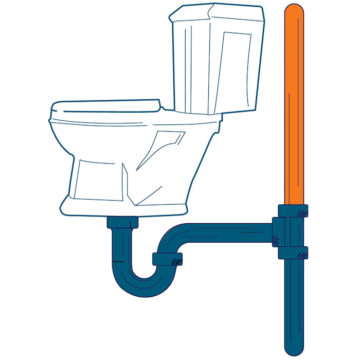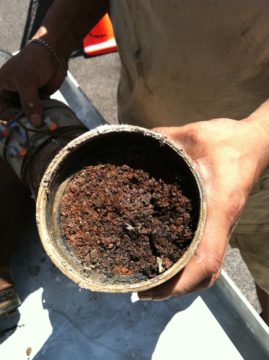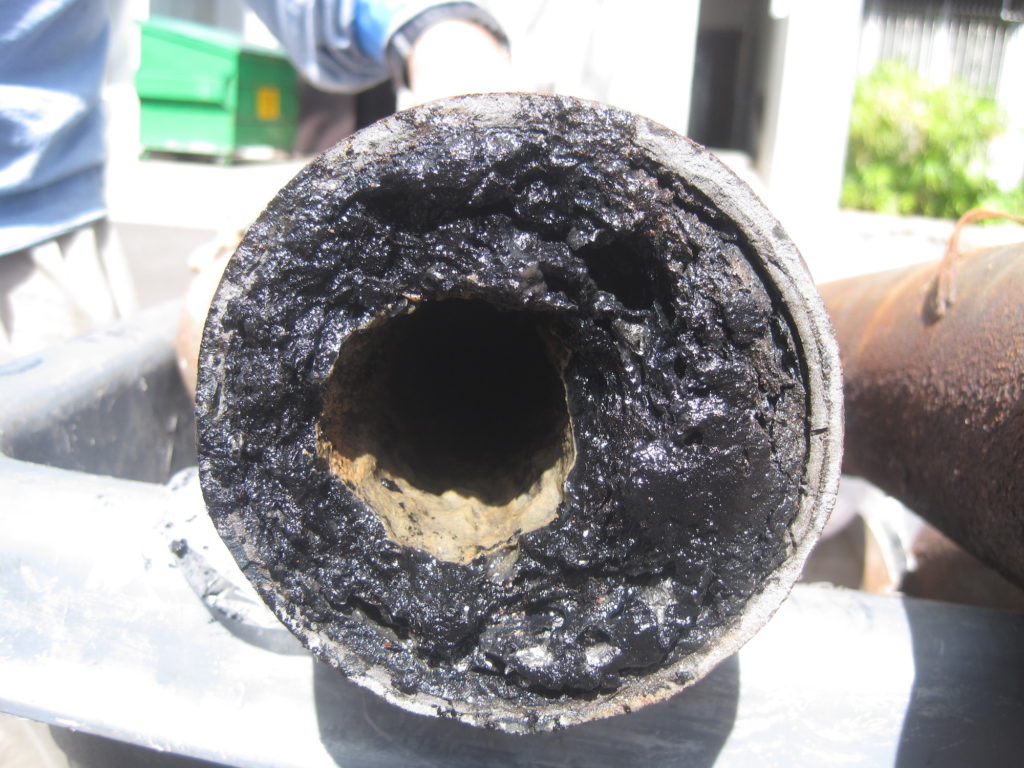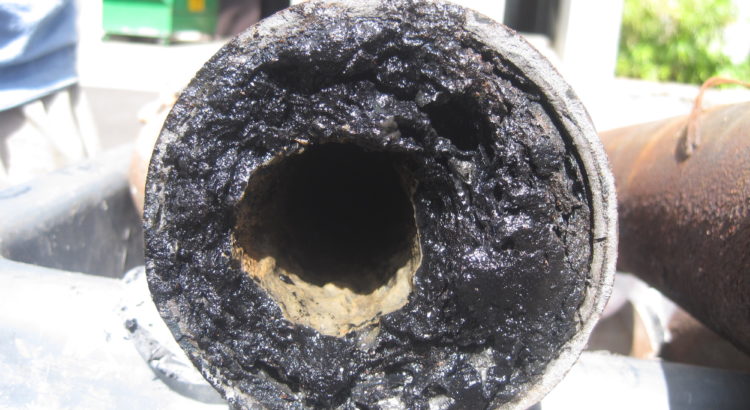Unclogging The Mystery of Clogged Pipes
Did you know, of all the piping systems in your building, the only system which is not pressurized is the drain, waste and vent (DWV) piping? Hot and cold water supply pipes for potable drinking water, pipes for air conditioning, most sprinkler systems, and even gas pipes for cooking all rely on pressure to move material (water, gas, or refrigerant) through the pipe, but your drain system relies on simple gravity.
The concept is that by flushing waste down the pipes with water, for example by flushing a toilet or running a faucet, gravity will aid the water in removing waste from the building. Unfortunately, the advent of water efficient fixtures, such as low flow toilets and aerated faucet heads designed to reduce water consumption, mean there is less water to help carry out the waste. The result is a greater opportunity for build-up within your piping system and an increased likelihood of clogs.
What Goes Down Must Come Up

Because DWV systems are not pressurized, they must breathe. When you turn on your sink, water goes down, through the sink drain, into the P-trap underneath your sink. As water builds in the sink, it pushes through the P-trap, and down into the drain line. In doing so, the water is replacing air in the pipe, but that air needs someplace to go. This is where the vent pipe comes into play, enabling the air to escape, thus allowing the system to “breathe.” P-traps are designed to keep the stinky air, given off by the waste water, inside the pipe thereby preventing odors from backing up into your apartment. Instead, the vent lines run all the way up through the roof of your building, venting into the atmosphere, where the odors immediately dissipate into the outside atmosphere so you don’t smell them. See Figure 1.

Because smaller amounts of water are used these days, waste will often sit in the pipes for extended periods of time before being completely purged from the building into the city’s wastewater system. By sitting longer in your pipes, decomposition begins to occur, increasing the amount of gases moving up through the vent lines. The more gas you have, the more corrosive the environment becomes inside the pipe, making your vent lines more vulnerable to problems. Corrosion, shale build-up, rust, and even drain line back-ups that flow up into the vent portion of the piping system can all cause the vent lines to become compromised. Sometimes we pull pipe from a building and owners assume it the drain line that is clogged because the pipe is completely full of debris, when in fact it’s a vent line that has become clogged with corrosion, preventing the drain system from functioning properly. See Figure 2.
Preventative Maintenance is Your Friend
If your community does not have a pipe cleaning or maintenance schedule, you need to implement one. Without it, you will be more susceptible to clogged pipes. If you are not having clogs yet, start on a maintenance plan now and you can significantly extend the usable life of your plumbing system. Your current plumbing service provider is the best place to start, and they can provide recommendations for maintenance options and a proposed schedule.
Identifying Your Clog
If you already have symptoms like back-ups, slow drains, or odors, it means your system is no longer operating like It was engineered to perform. There are typically two types of clogs: one-off blockages from someone putting something down the drain that they shouldn’t have, and systemic clogs resulting from a compromised plumbing system.
Cleaning Your Pipes
Clogs can be cleared in a number of ways including a mechanical “snake” which is inserted into the pipe with the intention of breaking up the obstruction, and hydro-jetting which employs a high pressure stream of water to break through any blockages and clean out the pipe, kind of like pressure washing, but for the inside of your pipes. Snakes work best for shorter runs (50 feet or less) and for smaller diameter pipes. Hydro-jetting works better for longer distances and larger pipes, but carries the risk of doing damage to older, degraded piping systems.
Either way, breaking up a clog and clearing a pipe blockage is as much of an art as it is a science, so hire someone who is experienced with diagnosing and unclogging drains – as it will surely save you money in the long run.
Replacing Your Pipes

If you have tried clearing your clogs and find that blockages continue to come back, you most likely have a systemic problem that needs a more serious solution. In this scenario, an appropriate next step is to visually inspect or “camera” your lines to see what kind of blockage or breakage you may have, where it is located, and whether or not it is severe.
If your problems appear to be building wide, work up a clear game plan with your contractor regarding your options. If your clogs are systemic, or beyond repair, it may be worth exploring pipe replacement options. See Figure 3. Today, full system pipe replacements are more common than you would think, with contractors offering options where residents do not need to move out, and where water is guaranteed back on nights and weekends.


